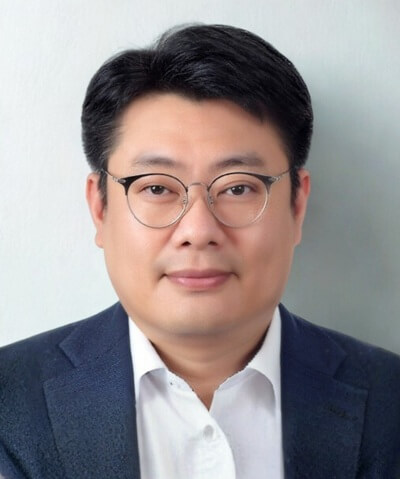Each year we at asmag.com compile the Security 50 report listing the top companies in security and exploring the latest developments in the industry. How did security fare this year, and how do top companies see the road ahead? As part of the project, we asked them directly.
Each year we at asmag.com compile the Security 50 report on the top companies in security and explore the latest developments in the industry. How did security fare this year, and how do top companies see the road ahead?
We asked high-level officials from top 10 companies Hikvision, Axis Communications and Hanwha Vision to share their views and insights in this Q&A session.
Even though the sector is relatively consolidated with a large share of its overall revenue in the books of the biggest players, we also compiled the assessments of upcoming players outside the top 10 in
this companion piece.
How do you assess the overall condition of the security industry in 2025? What are the main growth drivers this year, and do you also expect further growth in 2026?
 Allen Tang, VP, Hikvision International Business Center
Allen Tang, VP, Hikvision International Business Center:
Allen Tang, VP, Hikvision International Business Center
Allen Tang, VP, Hikvision International Business Center: From Hikvision’s perspective, 2025 has shown stable growth across international markets. While certain regions face geopolitical and trade-related challenges, we’ve seen strong demand in emerging markets such as MEA, Latin America, and Pan-APAC.
Looking ahead to 2026, we remain optimistic. The rapid evolution of large-scale AI technologies is expected to be a key growth driver, enabling smarter and more efficient security solutions. We anticipate physical security systems will become increasingly embedded in broader societal and industrial infrastructures, creating promising opportunities in the coming year.
Ray Mauritsson, CEO, Axis Communications: The security industry in 2025 is experiencing robust growth driven by the increasing global demand for safety and security, ongoing digital transformation and the accelerated use of AI. The shift toward hybrid architecture, coupled with the need for top-level cybersecurity, is further driving the market.
Woojin Kim, Head of the APAC Sales Department, Hanwha Vision: The security industry in 2025 has moved decisively into the era of “super-intelligent video surveillance,” driven by the ubiquitous integration of AI, transforming security from a reactive cost center into a strategic business enabler. The core growth drivers this year are the deployment of powerful edge AI technologies, notably our Wisenet 9 SoC, which places unprecedented processing power directly onto the camera, turning devices into autonomous, intelligent agents capable of real-time decision-making. We expect robust and accelerated growth in 2026 as these technologies mature and Generative AI integrates into edge devices for deeper contextual understanding. The APAC region, which is fueled by large-scale intelligent urban systems and ambitious digital transformation initiatives, will serve as a key engine for this global expansion and demand high-performance solutions.
Jin Cong, Product Manager, Raythink: In 2025, the security industry is experiencing structural growth, with AI serving as the primary driver of this growth. Leveraging large AI models, both edge devices and solutions are continuously evolving, and more scenario-based applications are being rolled out. In 2026, we expect an even broader range of AI applications to emerge.
This year, we've seen a significant acceleration in AI integration. In your view, what innovations are having the most transformative impact on physical security right now, and how have they influenced your business strategy/direction as a result?
Allen Tang: Large-scale AI is one of the most transformative innovations reshaping physical security today. From intelligent camera analytics to instant video search capabilities, the application of large-scale AI models delivers significant improvements in security protection, business intelligence, traffic management, and more.
In line with this trend, Hikvision has launched our Guanlan large-scale AI models, leveraging these capabilities to deliver advanced intelligence across our new products and solutions. This strategic focus on large-scale AI integration positions us at the forefront of the evolving security landscape.
 Ray Mauritsson, CEO, Axis Communications
Ray Mauritsson:
Ray Mauritsson, CEO, Axis Communications
Ray Mauritsson: AI integration is indeed having a transformative impact on physical security, moving systems beyond basic monitoring to proactive capabilities. Edge AI is a game-changer, enabling real-time analysis and predictive capabilities directly at the device. Another game-changer is the introduction of AV1 video codec standard in the security industry. This will deliver higher-quality video at a lower bandwidth as well as lowering storage costs and improving energy efficiency at a system level.
Axis has a long legacy in this area and we will continue to be at the forefront of innovation, in our own capacity and through our open platform ACAP.
Woojin Kim: I think the most transformative shift is the fundamental improvement in image quality and data integrity driven by AI at the edge, which immediately elevates our cameras into reliable business data engines. This innovation is powered by our Wisenet 9 SoC's dual NPU architecture. This design is critical because one of the two NPUs is fully dedicated to image processing, enabling AI-based Noise Reduction (NR) to function far beyond existing methods. By creating incredibly clean, accurate images at the source, we drastically improve bitrate and network efficiency by eliminating unnecessary data. This not only maximizes the effectiveness of physical security but also dramatically increases the value of our video data for Business Intelligence (BI), solidifying our role as a key operational tool for our customers.
Jin Cong: Large AI models have accelerated the speed and accuracy of scenario-specific algorithms. In the future, more specialized equipment will be applied to specific scenarios. In terms of corporate decision-making, product research and development will become more scenario-based and application-oriented, requiring a deeper insight into the real needs in each scenario.
Amid fierce competition and advances in technology, what strategy and action have you taken to beat the competition and achieve continued success in the market?
Allen Tang: Our core strategy is continuous innovation, driven by sustained R&D investment, especially in large-scale AI. The launch of our Guanlan large-scale AI models exemplifies this approach, introducing new innovations for AI-powered IoT applications through enhanced computer vision, natural language processing, and multimodal fusion.
For example, our DeepinViewX cameras, powered by large-scale AI, can reduce false alarms by up to 90% compared to conventional AI cameras, marking a significant leap forward in perimeter security. Meanwhile, our AcuSeek’s natural language search redefines video retrieval, allowing security teams to quickly locate critical footage using simple, intuitive commands such as “find red vehicles in parking lot B yesterday.” This dramatically improves operational efficiency and response times.
Ray Mauritsson: We maintain our market leadership by continuously delivering high-quality, cutting-edge products and solutions. Our open platform and our unique partner ecosystem give customers flexibility and innovation at scale, while our focus on cybersecurity, product quality, and sustainability ensures long-term value. This combination keeps Axis a step ahead as both a technology leader and a trusted partner.
 Woojin Kim, Head of the APAC Sales Department,
Woojin Kim, Head of the APAC Sales Department,
Hanwha Vision
Woojin Kim: Our strategy for maintaining market leadership rests on securing technological leadership while ensuring institutional trust. We beat the competition by embedding superior, demonstrable innovation into our products, like the Secure Element certified to FIPS 140-3 Level 3. This certification validates the integrity of the cryptographic modules in our Wisenet 9 powered cameras, instantly positioning us as the partner of choice for highly regulated government and enterprise customers. We then translate this technological trust into market success through customized market engagement, quickly developing and localizing AI solutions to meet the distinct operational and compliance needs of high-value vertical segments globally.
Jin Cong: We regard AI capability building as one of our top strategic initiatives. We have been increasing investment in AI technology and maintaining close communication and collaboration with industry and academia. Compared to visible-light images, which capture details such as facial features, clothing, and skin color, thermal images naturally offer greater privacy protection by focusing on the behaviors themselves—such as boundary crossing—rather than on personal details. AI technology is becoming increasingly powerful in feature extraction. In the future, laws and regulations governing compliance and ethics may impose stringent limitations on visible-light technologies in specific scenarios. We see this as an additional opportunity for thermal imaging in security applications.
What were the main market challenges and non-tech trends - such as ethics in AI or compliancy issues - and how did you address them?
Ray Mauritsson: Beyond technology, 2025 underscored the importance of ethics in AI. The rapid deployment of AI technologies raised significant ethical concerns regarding privacy and responsible use. Axis is committed to advancing responsible AI, ensuring that our technology augments human intelligence, respects human rights, and benefits society. Our approach embeds principles of fairness, transparency and data privacy from the outset of product development, rather than as an afterthought.
Woojin Kim: The 2025 video surveillance market faced intensifying cyber risks and the complex demands of global privacy compliance. Hanwha Vision focused on verifying trust through rigorous global standards. We successfully acquired major certifications like ETSI EN 303 645 and ISA/IEC 62443-4-1 to validate our secure development lifecycle. This standards-based commitment is supported by integrating a Secure Element into our Wisenet 9 powered cameras for fundamental hardware security. Furthermore, we ensure transparency by publishing our SBOM (Software Bill of Materials). By prioritizing these verifiable security measures, we transformed the challenging regulatory environment into a clear competitive advantage in the high-value sector.
 Jin Cong, Product Manager, Raythink
Jin Cong:
Jin Cong, Product Manager, Raythink
Jin Cong: Regarding trade barriers, we closely monitor policy trends in the short term and adjust our product research and development strategies to address their long-term impacts. Meanwhile, we have strengthened our support for regional partners. In fact, we think trade barriers flow like water, which means businesses will naturally flow from areas with high barriers to those with low barriers. You can see this applies to any industry.
Beyond technology and growth, how do you see the role of the security industry as a partner for the business sector and other organizations evolving? What responsibilities or opportunities do you think companies should embrace?
Allen Tang: The security industry is evolving beyond traditional protection to become a more integrated part of AIoT ecosystems. As industries across the board accelerate their digital transformation, the security sector is uniquely positioned to provide smarter, more adaptive solutions that support this shift.
Advancements in large-scale AI models and perception technologies will be pivotal in driving digitalization across diverse industries. From transportation and energy to healthcare, manufacturing, logistics, and retail, these AIoT innovations are enabling organizations to automate processes, enhance decision-making, and achieve greater efficiency. Aligned with the transformation, our business strategy focuses on leveraging AIoT technologies, products, and solutions to advance industry digitalization, enhancing not only security, but also overall operational intelligence and effectiveness.
Ray Mauritsson: The security industry's role is evolving to a more strategic partner that enables business growth and efficiency. This shift, driven by the convergence of physical security with IT and operational technologies, provides valuable business intelligence beyond traditional protection. Our responsibility is to act as trusted advisors, delivering both security and business value, while ensuring technology is deployed adequately and responsibly.
Woojin Kim: The security industry's role has fundamentally shifted, transcending simple loss prevention to become an essential strategic partner that facilitates business intelligence and manages complex enterprise risk in the digital domain. Our value proposition is now centered on transforming security infrastructure from a historical cost center into a source of actionable business data, enabling customers to optimize operations, enhance resource utilization, and ensure regulatory adherence. Crucially, we embrace the responsibility of acting as a partner in governance and ethical resilience, guiding organizations through converging cyber and physical threats while guaranteeing compliance with stringent data privacy regulations. To solidify this expanded mandate, we prioritize the establishment of verifiable trust by obtaining rigorous certifications (such as ISA/IEC 62443 and ETSI EN 303 645) and fostering an open, collaborative ecosystem. This integrated approach ensures that security is strategically recognized not as a liability, but as a critical enabler of sustained business growth and operational integrity.
Jin Cong: In fact, traditional security industry companies are gradually transforming to develop more comprehensive applications. By leveraging their expertise in image acquisition, networking, AI, and system integration, they are creating brand-new applications and integrating them into the operations and ecosystems of their partners.
We believe that in the current era, when AI investment is booming and there's no obvious business direction, we can assist our partners and society in finding suitable application scenarios, enabling AI to truly realize its value, rather than merely competing on technical specifications.
Continue reading about
upcoming companies outside the top 10 and their takes on AI trends and challenges from manpower shortage to unlocking potentials in new markets.